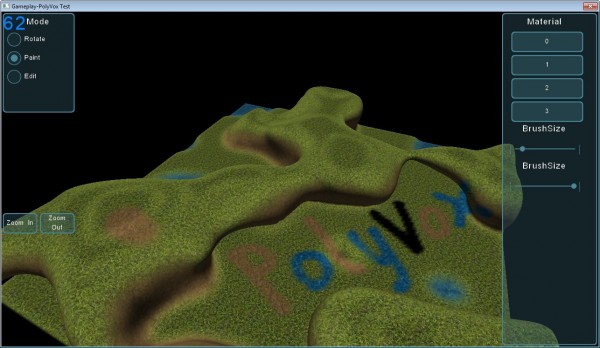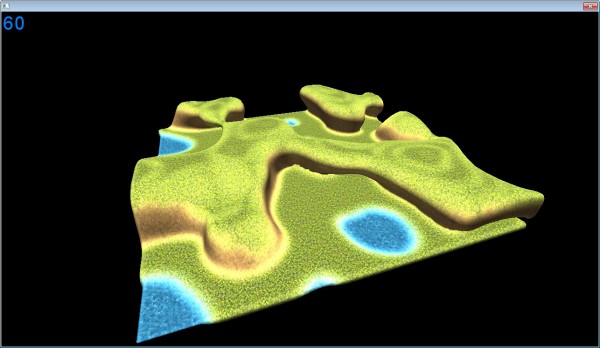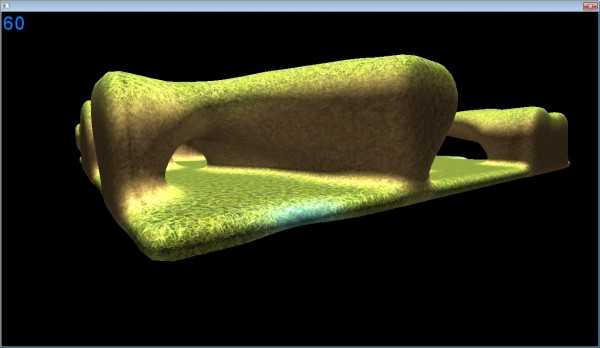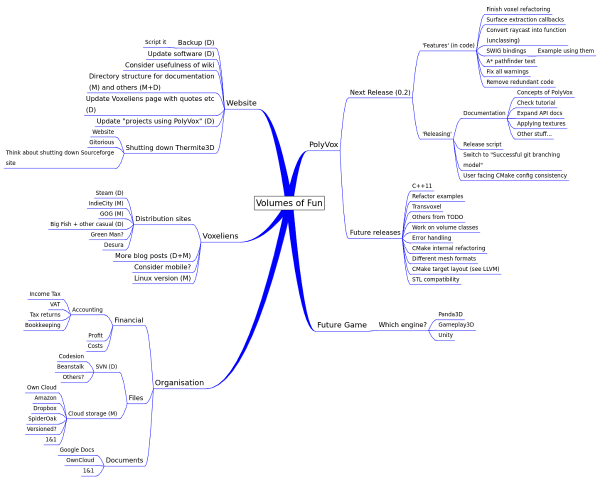![]() Over the last couple of weeks I’ve been continuing my integration efforts between PolyVox and gameplay3d. This is proving to be extremely useful as a way of identifying the problems and limitations within PolyVox, especially as I haven’t worked with smooth voxel terrain for quite a while (since before Voxeliens). In particular I have been focusing on level of detail support, and as you can see below I have had some success:
Over the last couple of weeks I’ve been continuing my integration efforts between PolyVox and gameplay3d. This is proving to be extremely useful as a way of identifying the problems and limitations within PolyVox, especially as I haven’t worked with smooth voxel terrain for quite a while (since before Voxeliens). In particular I have been focusing on level of detail support, and as you can see below I have had some success:
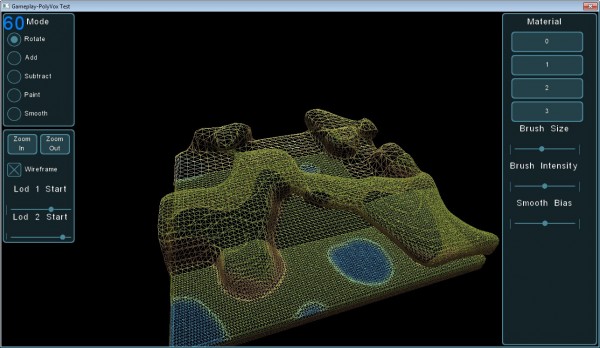 The MeshDecimator class has recently been deprecated, and I’ve been saying for a while that down-scaling the volume data and running the Marching Cubes algorithm on this smaller data is probably a better way to achieve LOD for smooth terrain. There is even an example in PolyVox which demonstrates this on a sphere. However, doing it on a real world dataset has proved to be a bit more complex, and I can see now that some changes need to be made to the way PolyVox handles sampling outside a volume and to the way the VolumeResampler works. But in principle it does seem like a sound approach.
The MeshDecimator class has recently been deprecated, and I’ve been saying for a while that down-scaling the volume data and running the Marching Cubes algorithm on this smaller data is probably a better way to achieve LOD for smooth terrain. There is even an example in PolyVox which demonstrates this on a sphere. However, doing it on a real world dataset has proved to be a bit more complex, and I can see now that some changes need to be made to the way PolyVox handles sampling outside a volume and to the way the VolumeResampler works. But in principle it does seem like a sound approach.
That said, there’s still an issue with cracks between the mesh patches where the LODs don’t line up exactly (you can’t really see this in the screenshot because it’s wireframe). Some tests have shown that simply overlapping the meshes slightly seems to be a viable solution, but again I need to make some changes to PolyVox to support this more naturally. Of course, the Transvoxel Algorithm is also a more robust solution which may make an appearance in the future.
Next up I’m expecting to look at physics integration for both the smooth and cubic styles of terrain.


